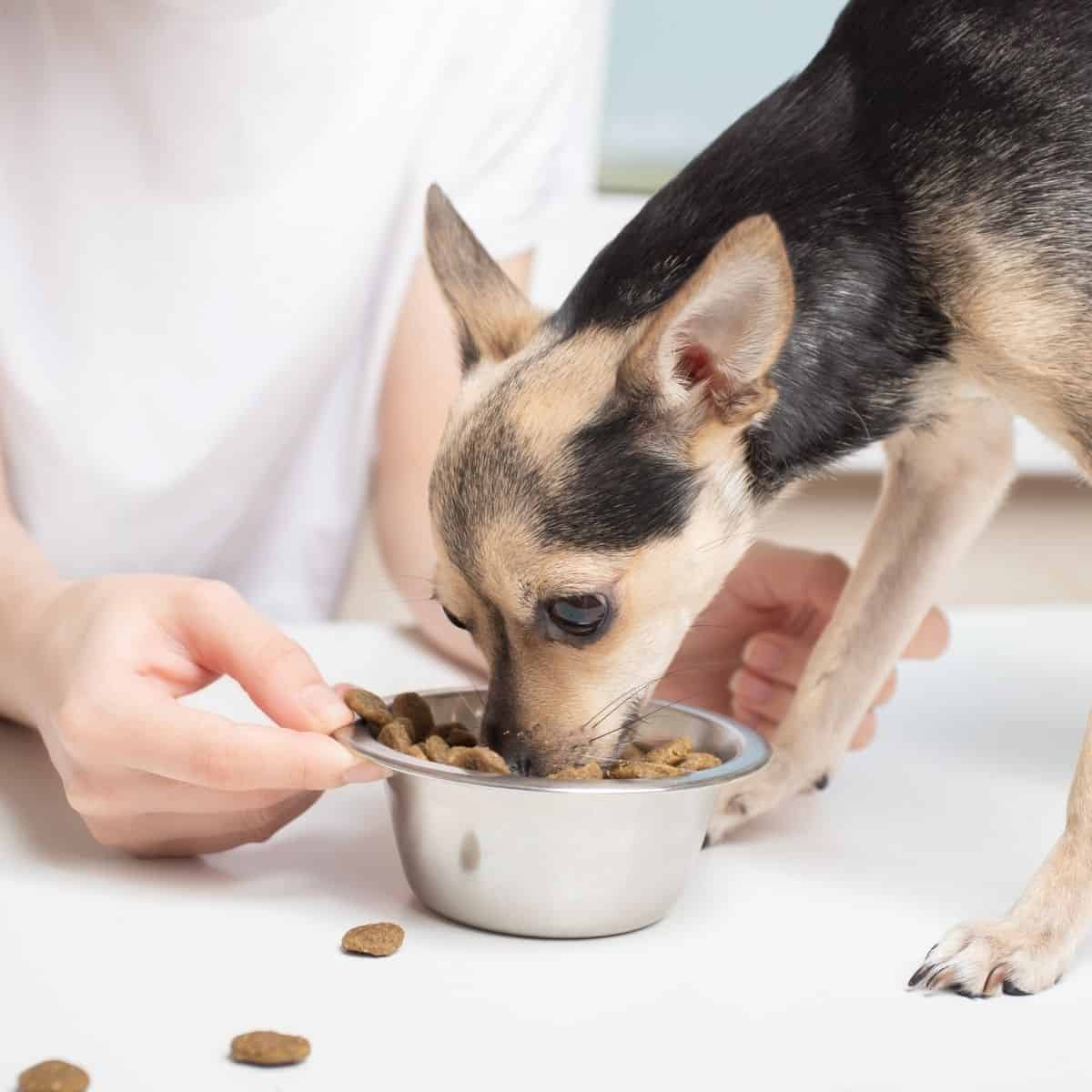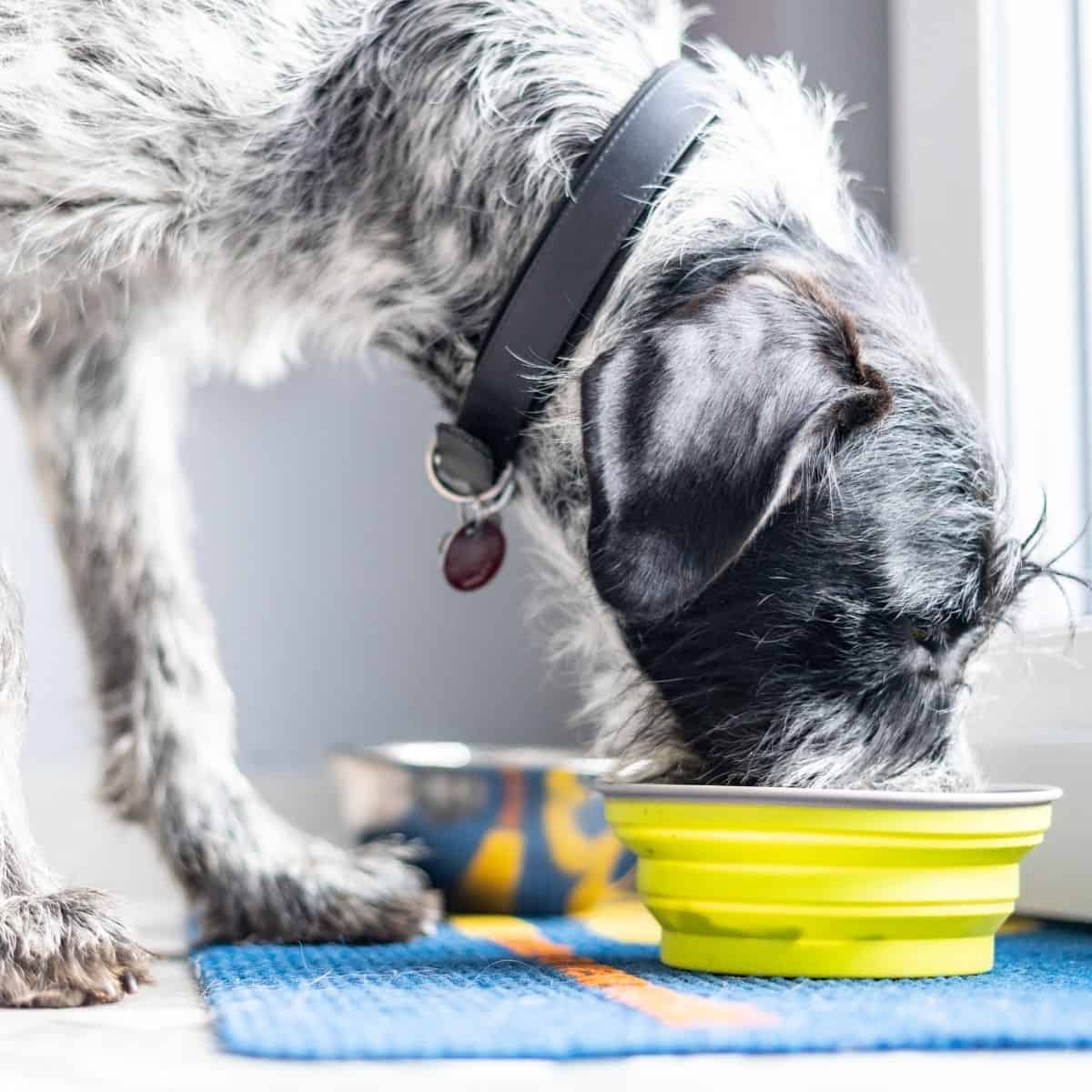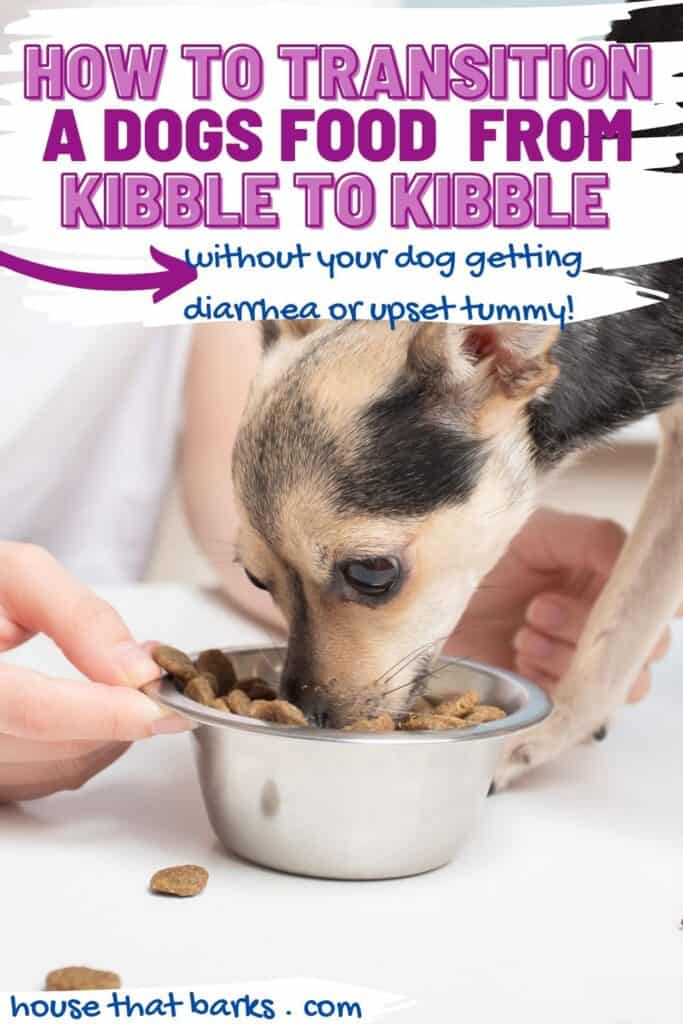How to transition a dog from one Kibble to different Kibble?
Domestic dogs usually eat a diet that is much less varied than diets of their owners. The variety of most human diets often leads us to underestimate the impact of a diet change on dogs.
Especially if your dog has been eating the same thing for a long time, its body is in balance with his current diet, and it will take time for him to achieve a new balance with a new diet.
Transitioning him gradually reduces the disruption of the intestinal bacteria in the irritation of the digestive tissues that frequently result from rapid diet changes (think, diarrhea)!
The guidelines below are useful when transitioning a dog from one kibble to a different kibble.

Went to Contact your Veterinarian
If your dog refuses to eat for more than 48 hours, contact your veterinarian.
If the diet transition leads to vomiting that continues for 24 hours after you stop feeding or begins again after you re-introduce food, contact your veterinarian.
How to Transition your Dog from one Food to Another ( Kibble to Kibble)
Almost all dogs do well with gradual diet transitions, but if your dog refuses to eat or develops vomiting, diarrhea, excess gas or constipation, you may be trying to transition him too quickly.
If this happens, stop the transition and withhold food for 24 hours. After 24 hours, begin feeding frequent, small meals of his original diet.
If all symptoms cease and your dog appears to be back to normal, you can restart the transition a few days later, but with a more gradual approach.
If the transition leads to vomiting that continues for 24 hours, contact your veterinarian.

Gradually Transition to the New Dog Food
Transitioning from one diet to another should take at least seven days, and it’s fine to transition more gradual.
Mix the old and the new diets together as you gradually decrease the amount of old food and increase the amount of new food.
| Days 1-2 | Days 3-4 | Days 5-6 | Day 7 | |
| OLD Diet | 75% | 50% | 25% | |
| NEW Diet | 25% | 50% | 75% | 100% |
How to Transition to a Higher Fat Kibble
Transitioning to a diet that’s higher in fat takes longer.
If the fat level of the new diet is more than three percentage points, based on dry matter, higher than the fat level of your dogs current diet, your dogs pancreas will need much longer to increase its production of enzymes and enable your dog to safely make the transition.
| Day 1-14 | Day 15-28 | Day 29-42 | Day 43 | |
| OLD DIET | 75% | 50% | 25% | |
| NEW Diet | 25% | 50% | 75% | 100% |
Support your Dog Digestive Health Through the Transition
For many dogs, a gradual approach is sufficient to ensure a successful transition to a new food. But some dogs require, and almost every dog will benefit from, supplementation that strengthens its digestive health during the transition.
Supplement with prebiotics, a few days before starting the transition, if possible. Prebiotics feed the good bacteria already in your dog’s digestive tract.
Prebiotics include fructooligosaccharides (FOS), inulin, oligofructose, chickpea root, dandelion, burdock, wild yam, jicama, agave and garlic.
Prebiotic supplements to consider include: InClover Optagest, Ark Naturals Gentle Digest treats, The Honest Kitchen Perfect Form, and HerbSmith Microflora Plus.
Supplement and Digest a Enzymes - Digestive enzyme supplements help the body digest food and especially helpful to reduce the work load on the pancreas.
Look for products with Protease, Amylase, Cellulose or Lipase.
Digestive enzyme supplements to consider are: InClover Optagest, Animal Essentials Plant Wnzymes & Probiotics, HerbSmith Microflora Plus and The Honest Kitchen Pro Bloom Goats Milk.
What if your Dog Refuses to Eat the New Food?
Dogs can be very particular about what they will and won’t eat, but the persistence is almost always possible to find a variety of food options for a particular dog.
The key is identifying what palatability triggers an individual dog has. Some dogs are motivated by smell, warming the food before serving may appeal to these dogs or adding a topper of dehydrated raw food or their favorite tree.
Please remember to adjust the amount of food your feeding for the extra calories in the top or slowly decrease the amount of topper until the extras aren’t needed anymore.
Final Thoughts
Gradual transitions almost always lead to success.
If you don’t succeed the first time, stop, take a break, let your dog regain balance with his diet, support your dog suggestive system with supplements and then try again more gradually.






Leave a Reply